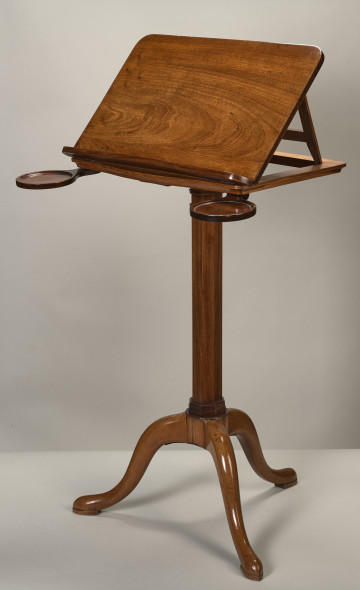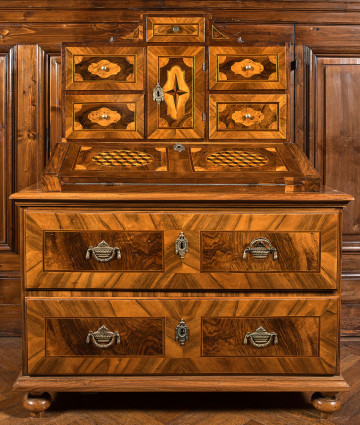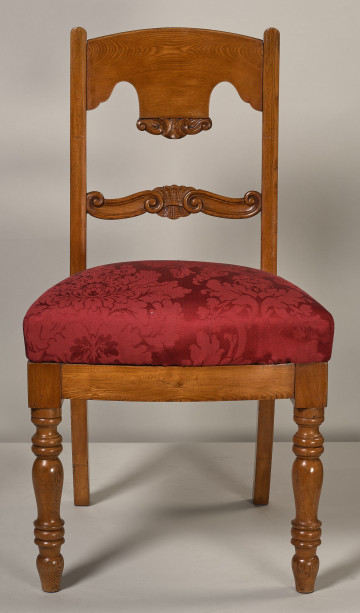
Wooden desktop
18th-19th century
Castle Museum in Łańcut
Part of the collection: Furniture and interior furnishings
Chest of drawers In the 18th century, the chest of drawers became both a utilitarian and a representative piece of furniture, popularised and manufactured throughout Europe. It occupied a prominent position in the room for which it was intended. Sometimes it was placed in the centre against the wall, sometimes – between the windows against a mirror, it could be found in a twin pair flanking the fireplace, in which case it usually had a marble top made of the same stone as the fireplace framework. The chest of drawers is a chest piece of furniture with drawers or as a cabinet with doors. The Polish name of the piece of furniture (komoda) is derived from the Latin comodus, which passed into the French commode meaning comfortable. This type of furniture appeared in France at the end of the 17th century and subsequently several of its variations developed. The French cabinetmakers introduced and popularised different types of chests of drawers. The basic variants included smaller pieces of furniture with two drawers, on high legs, and large ones with three or four drawers on low legs. The object in question, acquired by the Castle Museum in Łańcut, belongs to the second type. In the late Rococo period, chests of drawers, while retaining the traditional shape of the period, were distinguished by a geometric arrangement of veneers and marquetry, as well as a considerable restraint of ornamentation. Teresa Bagińska-Żurawska https://orcid.org/0000-0002-9243-3967
Author / creator
Dimensions
height: 77 cm, width: 92 cm
Object type
Furniture and interior fittings
Technique
carpentry
Material
wood, marble
Creation time / dating
Creation / finding place
Owner
Castle Museum in Łańcut
Identification number
Location / status

18th-19th century
Castle Museum in Łańcut

18th century
Castle Museum in Łańcut

19th (?) century
Castle Museum in Łańcut
DISCOVER this TOPIC
Castle Museum in Łańcut
DISCOVER this PATH
Educational path